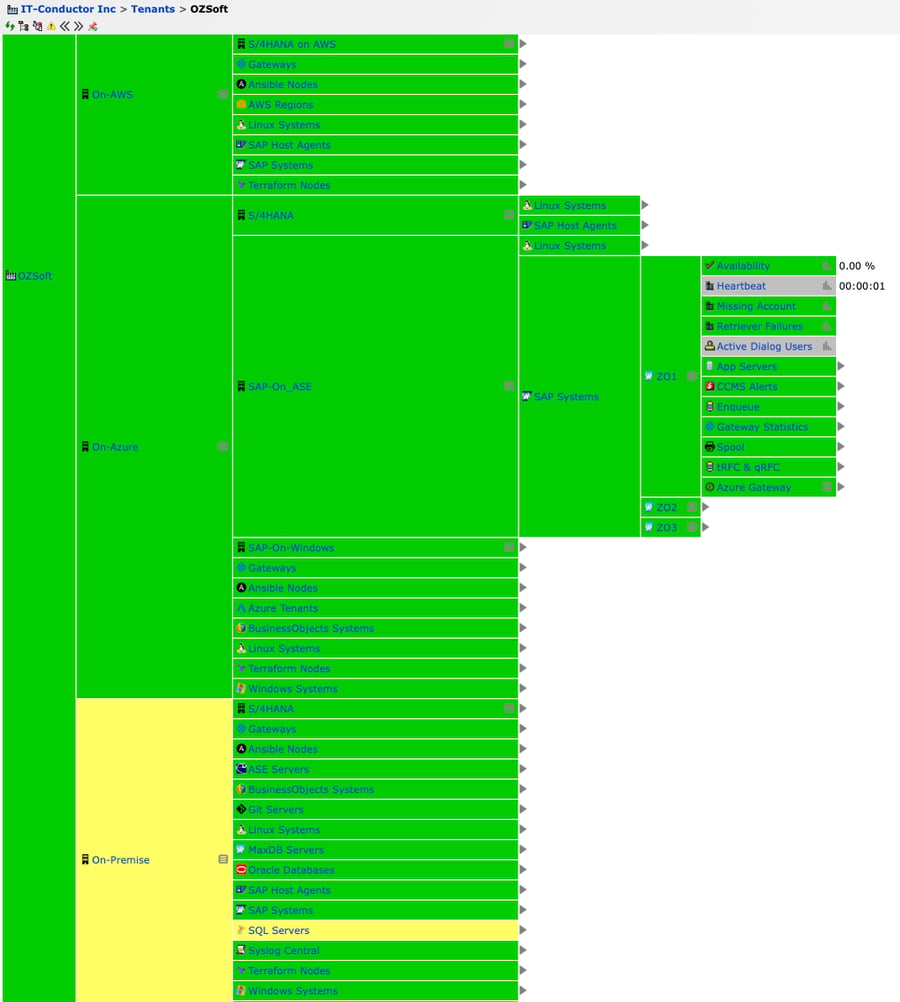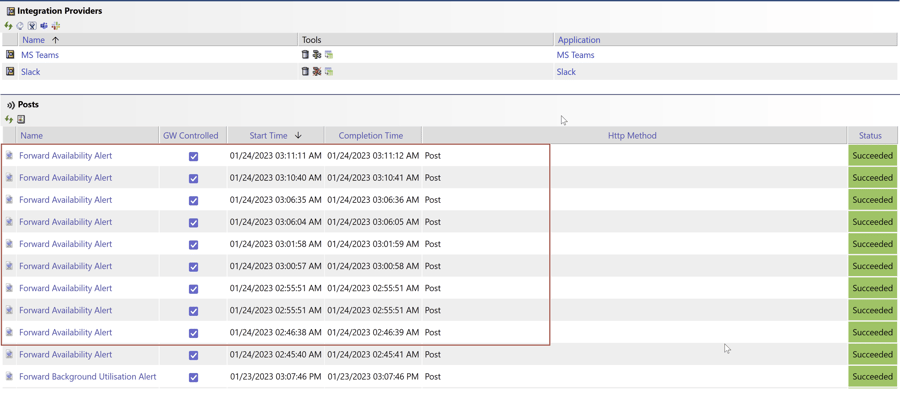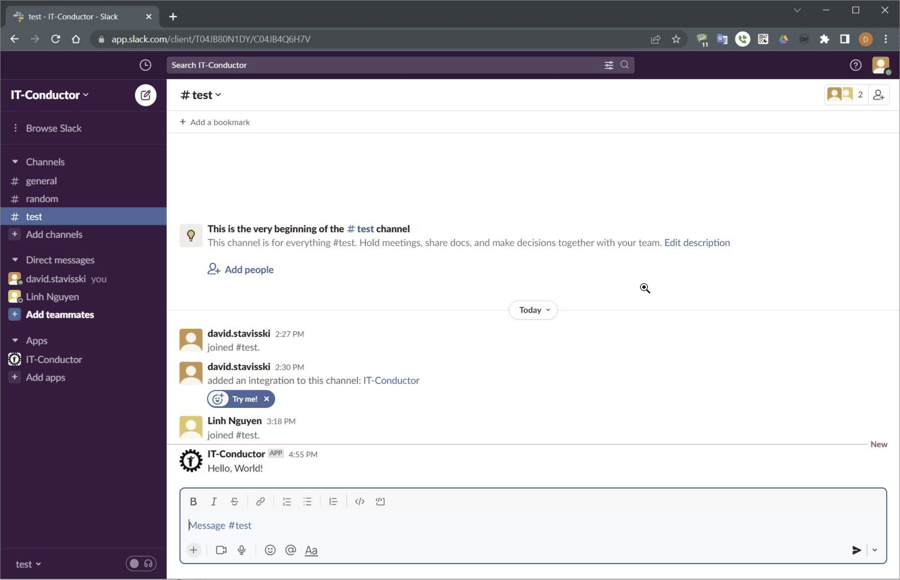Break down the barriers of IT silos and unlock the full potential of your organization with unified monitoring.
The push toward digital transformation has driven many organizations to adopt multiple tools to manage different parts of their IT environment. While this may seem practical at first, it often results in a patchwork of disconnected systems that don’t communicate well. The outcome is familiar: operational inefficiencies, higher complexity, duplicated effort, and reduced productivity.
These fragmented tools also create data silos. When information is scattered across systems and stored in incompatible formats, teams struggle to aggregate, analyze, and interpret it. This makes it difficult to understand the overall health of the IT landscape, identify trends, or make timely, data-driven decisions.
To address these challenges, many organizations are moving toward unified monitoring solutions. By consolidating data and visibility into a single platform, teams gain a holistic view of the entire IT infrastructure, identify issues faster, and make more informed decisions backed by unified, real-time insights.
2. Counterproductive Measures and Increased Complexity
3. Escalating Costs in Training, Maintenance, and Support
What are the impacts and challenges of IT silos?
Understanding the impacts and challenges of IT silos is crucial before adopting any IT strategy. Failing to recognize how silos impact performance, collaboration, and decision-making can result in inefficient processes and missed opportunities.
In this section, we break down the key consequences organizations face when IT silos go unmanaged.
1. Operational Inefficiencies and Team Conflicts
When different teams use separate tools to monitor and manage IT resources, duplicated efforts often occur, especially when conducting root cause analysis (RCA). This redundancy wastes time and resources and can create friction between teams.
For example, one team may investigate an incident using their preferred toolset, while another team, unaware of the ongoing work, starts from scratch with a different tool. This slows problem resolution and can shift focus from collaboration to finger-pointing.
This lack of shared understanding across teams and departments stems from the dilemma of having a fragmented IT environment with siloed tools and disjointed workflows. The result is communication gaps, hindered cross-functional collaboration, and an environment that undermines innovation, teamwork, and organizational agility. Without a unified approach, organizations struggle to respond quickly, adapt to change, and maintain overall operational effectiveness.
2. Counterproductive Measures and Increased Complexity
The siloed nature of IT tools often leads to increased complexity and counterproductive processes. Each tool has its own configuration, interface, and data storage, making it challenging to manage multiple systems simultaneously. This fragmentation creates information gaps, making it difficult to correlate events, understand dependencies, and assess the impact of one component on another.
For example, consider an incident ticket raised for application slowness. The Service Desk or Level 1 Support team typically forwards the ticket to the Application Team. However, due to siloed tools, the Application Team may have limited visibility into the underlying infrastructure. If the root cause is network-related, they may lack the necessary insights to diagnose and resolve the problem.
The ticket then moves to the Network Team, introducing delays and requiring extra coordination. Each handoff prolongs resolution time and fragments the incident management process.
Valuable lessons learned often remain confined within individual teams, preventing the organization from leveraging collective expertise. This perpetuates isolated decision-making and limits the ability to make informed, data-driven decisions across the broader IT landscape.
3. Escalating Costs in Training, Maintenance, and Support
Managing a multitude of IT tools requires significant investments in training and skill development. Each tool often demands specialized knowledge, which can create a fragmented workforce with limited cross-functional collaboration and knowledge sharing. This fragmentation reduces scalability, making it harder to integrate systems and adapt to evolving business needs.
Moreover, maintaining multiple tools adds complexity and increases the operational burden on IT teams. Each tool requires separate upkeep, and interacting with vendor support further escalates administrative overhead and costs.
How does unified monitoring help organizations overcome IT silos?
Unified monitoring helps organizations overcome the challenges of IT silos by providing a single, integrated view of the entire IT infrastructure. Unified monitoring solutions consolidate data from multiple sources into a single platform, enabling teams to easily recognize gaps, quickly identify and address issues, and collaborate more effectively.
Holistic Approach to IT Operations
Unified monitoring presents a holistic approach to IT operations, transcending the limitations imposed by siloed tools. By providing a single platform to monitor and manage the entire IT infrastructure, organizations can gain a comprehensive view of systems, applications, networks, and more. This holistic perspective enables IT teams to understand the interdependencies and relationships between different components, facilitating proactive management and optimization of resources.
In IT-Conductor, you can see all your resources at a glance from the Service Grid. Whether systems are deployed on-premise or in the cloud, you can see them all from this view.
 Figure 1: IT-Conductor Service Grid
Figure 1: IT-Conductor Service Grid
You can easily toggle the triangular arrow (►) as you drill down to your desired component.
With unified monitoring, organizations can easily identify potential bottlenecks and/or performance issues across the entire IT landscape. This holistic approach empowers IT teams to make informed decisions, improve overall operational efficiency, and deliver better business outcomes.
Learn more about Application Performance Management and Infrastructure Monitoring.
Enhanced Collaboration
Shared visibility through unified monitoring empowers teams to work together seamlessly, share insights, and collaborate more effectively. With a unified monitoring platform, teams can access real-time data, alerts, and visualizations, enabling them to have a common understanding of the IT environment.
In IT-Conductor, you have the flexibility to configure the delivery of IT-Conductor Alerts to various Service Desk applications, such as Derdack EA and Jira, where they can be treated as incidents.
 Figure 2: MS Teams and Slack Integration Providers in IT-Conductor
Figure 2: MS Teams and Slack Integration Providers in IT-Conductor
 Figure 3: Slack Integration with IT-Conductor
Figure 3: Slack Integration with IT-Conductor
This versatility allows organizations to customize the notification delivery to suit their preferred workflows and ensure seamless integration with their existing IT Service Management (ITSM) and collaboration tools.
This shared visibility also promotes cross-functional collaboration, as teams can align their efforts and collectively address issues more efficiently. It breaks down communication barriers and fosters a culture of collaboration, where expertise and knowledge can be shared across departments.
Better Data Aggregation and Analysis
Unified monitoring solutions consolidate data from multiple systems and sources into a single platform, enabling efficient data aggregation and analysis. This centralized approach eliminates data silos, allowing organizations to gain meaningful insights into the overall health of the entire IT infrastructure, identify trends, and make data-driven decisions.
Monitoring in IT-Conductor is built around two concepts — Threshold and Override:
- Threshold defines the specific aspects of what to monitor, particularly the object (or multiple objects) and their associated attributes that contain the monitored values.
- Override defines how the object will be monitored, specifically referring to the threshold values used to trigger status change and alert generation.
Regardless of the system type to be monitored, everything will be treated as an object. This allows IT-Conductor to orchestrate different IT components, leveraging the parallel processing engine that lets you better manage distributed systems and implement cohesive strategies for optimizing performance.
Simplified Troubleshooting
With unified monitoring, troubleshooting becomes more streamlined and efficient. Instead of navigating through multiple tools and user interfaces, IT teams can access a centralized platform that provides a holistic view of the IT environment. This simplifies the troubleshooting process, accelerates root cause analysis, and enables faster incident resolution, minimizing downtime and improving service levels.
IT-Conductor leverages time-synchronized troubleshooting where data, including metrics and alerts, are synchronized in time. When services consist of multiple technology components, it is critical to collect data from these components in the same time series to enable:
- Visual Correlation - Visualizing synchronized data facilitates the identification of patterns, anomalies, and trends, aiding in troubleshooting and problem resolution.
- Statistical Correlation - Time series data, when aligned, form a solid foundation for conducting various statistical analyses. Statistical methods such as calculating averages, identifying spikes, and detecting deviations become more effective, enabling easier identification of root causes and understanding of system behavior.
- Benchmarking and Baselines - By comparing data from different time periods (hourly, daily, weekly, monthly, etc.), organizations can establish benchmarks and baselines. These comparisons provide reference points for evaluating performance, detecting variations, and identifying areas that require attention or improvement.
By ensuring time synchronization and alignment of data, organizations can unlock the power of visual and statistical correlation while establishing benchmarks and baselines. This comprehensive approach enhances troubleshooting capabilities, promotes data-driven decision-making, and ultimately leads to more efficient and reliable IT operations.
Optimized Cost
Unified monitoring eliminates the need for maintaining and managing multiple siloed tools. By consolidating monitoring capabilities into a single platform, organizations can optimize costs associated with tool licensing, maintenance, training, and support. The streamlined approach also reduces administrative overhead, allowing IT resources to be utilized more efficiently and effectively, resulting in cost savings and improved return on investment (ROI).
Increased Productivity
Lastly, unified monitoring enables teams to save valuable time and effort by accessing all relevant information from one centralized location. Navigating through multiple tools and interfaces is no longer needed, reducing the risk of errors and delays. This streamlined approach enables quicker identification and resolution of issues, minimizing downtime and improving overall system performance.
Moreover, unified monitoring provides advanced automation capabilities. By leveraging automation, routine tasks can be automated, freeing up teams to focus on more value-adding activities.
From Silos to Synergy: IT-Conductor as a Unified Monitoring Solution
Silos of tools can cause significant challenges for organizations managing complex IT environments. Operational inefficiencies, increased complexity, and escalating costs are all common issues when different teams from different departments use different tools to manage different IT resources. Unified monitoring solutions can help organizations overcome these challenges by providing a single, integrated view of the entire IT infrastructure. With a unified monitoring solution, teams can collaborate more easily, increase productivity, and reduce costs.
IT-Conductor is at the forefront of unified monitoring, empowering organizations to break free from silos and embrace a more streamlined and efficient approach to IT operations. By consolidating data from diverse systems, IT-Conductor delivers a comprehensive view of the entire IT landscape, enabling proactive monitoring, rapid issue resolution, and data-driven decision-making. With its advanced features and seamless integration capabilities, IT-Conductor equips organizations with the tools needed to drive operational excellence, foster collaboration, and unlock the true potential of the IT infrastructure.
Make IT-Conductor your trusted partner in transitioning from silos to synergy. Experience the power of unified monitoring and take control of your IT operations like never before.


